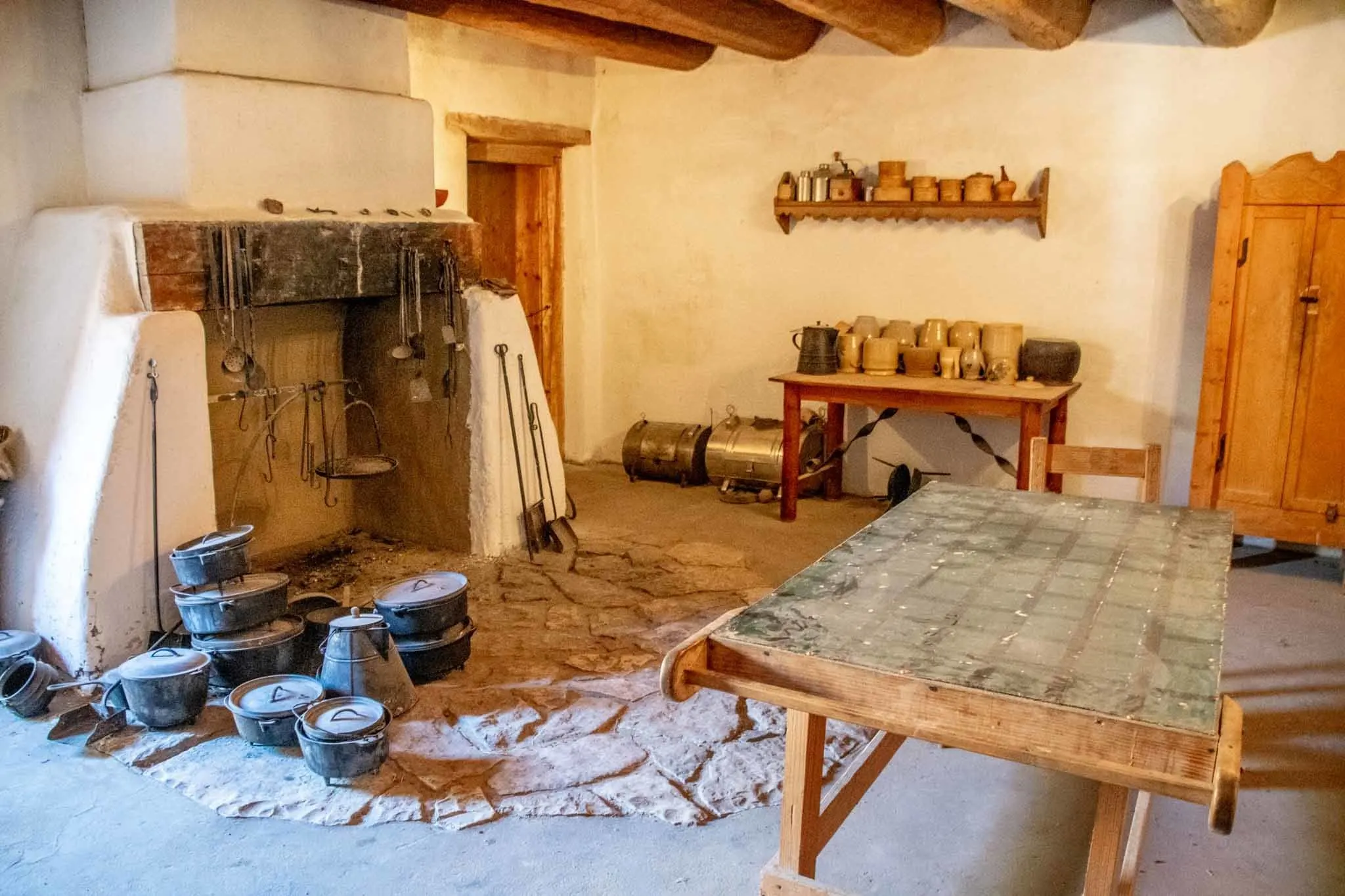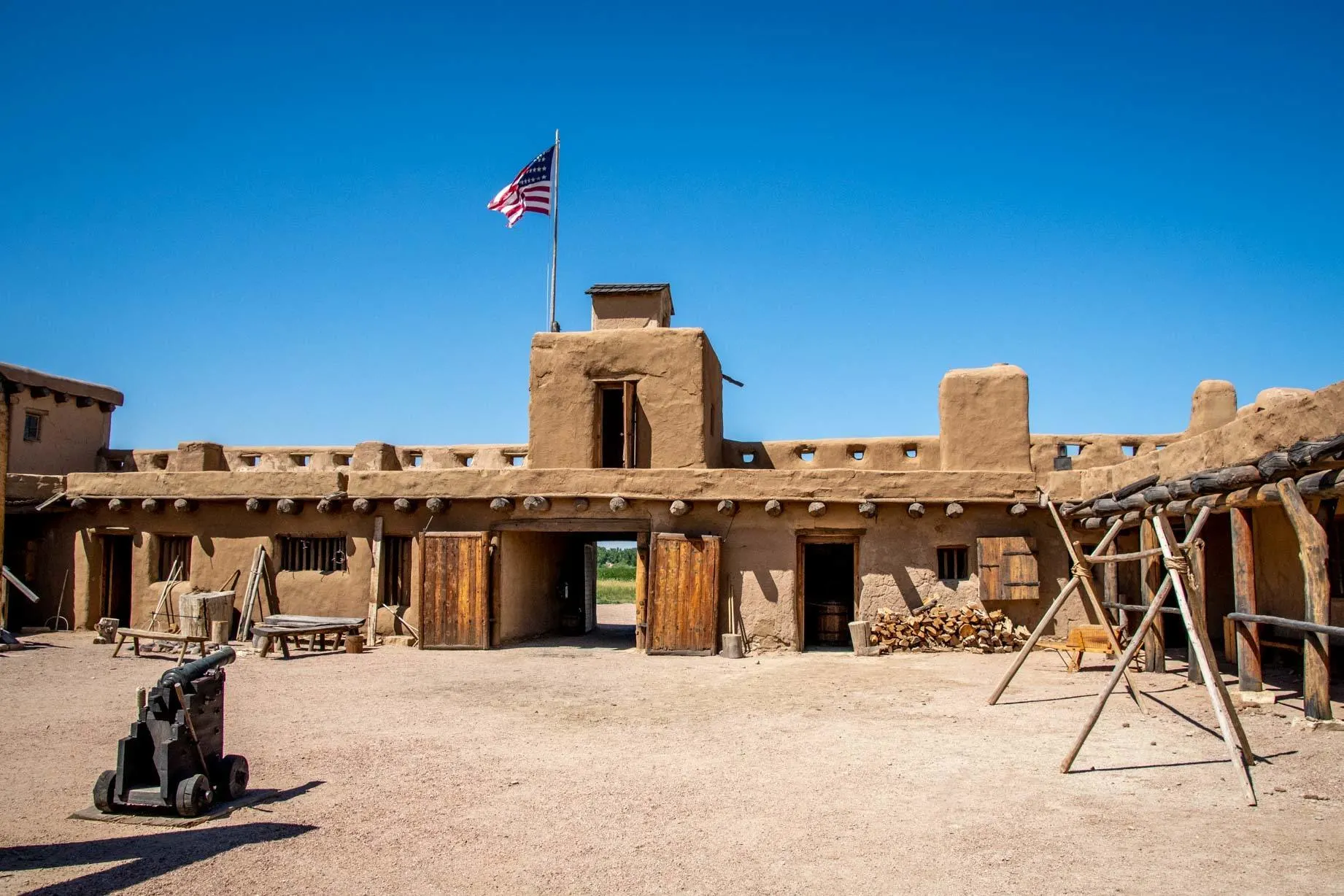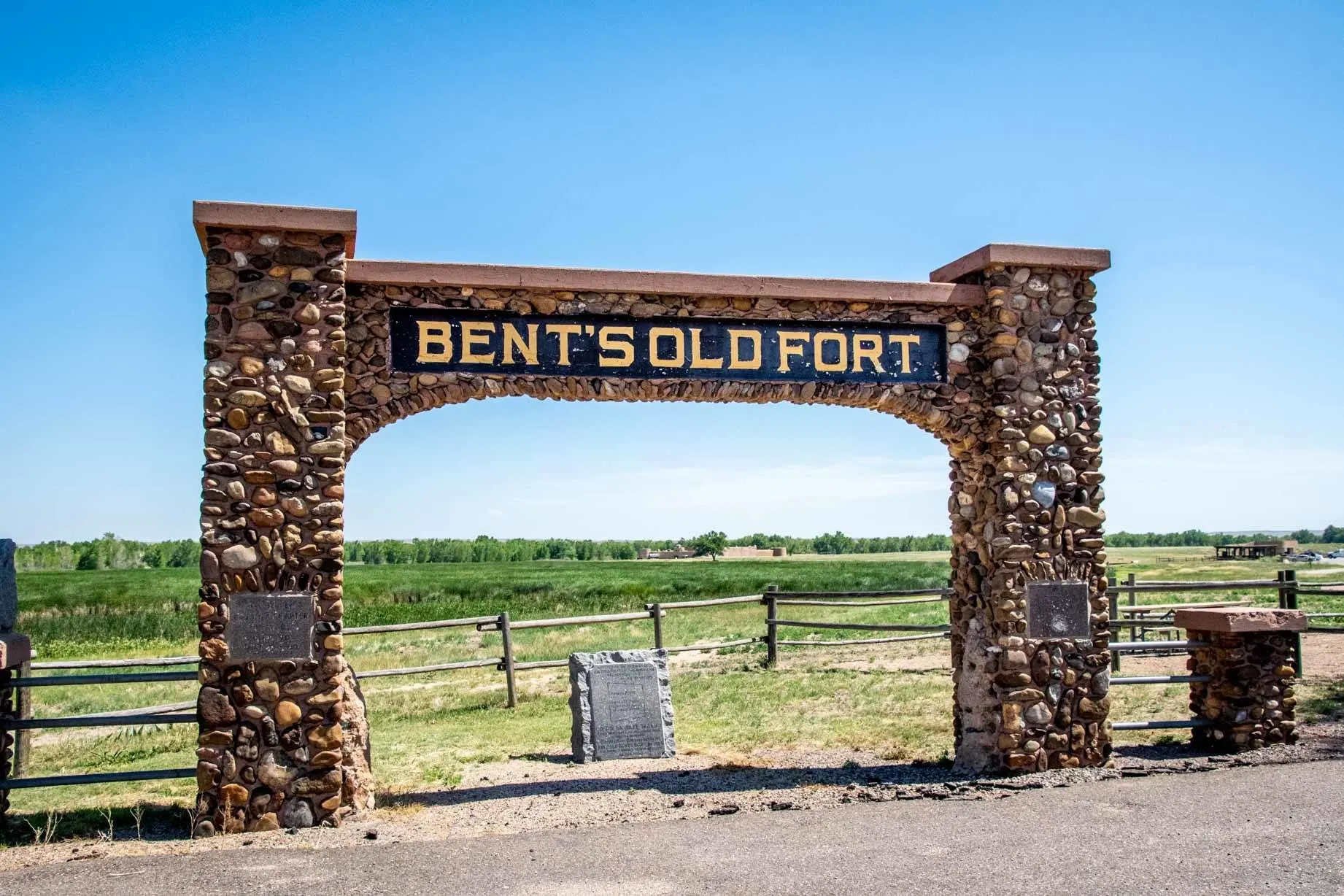On the high plains of Eastern Colorado near the banks of the Arkansas River, history was made. A simple adobe fortification became a place of peace, commerce, and opportunity. This is the Bent’s Old Fort National Historic Site.
Back in the decades after the Louisianna Purchase, the high plains were known as the Great American Desert. Water and resources were scarce. And the Bent’s Old Fort was the only place on the Santa Fe Trail to procure supplies between Missouri and Santa Fe. This outpost was one of the most important places on the continent.
These days, Bent’s Fort in Colorado is a popular destination for travelers and school groups. It is also an important stop for people driving the Santa Fe Trail National Scenic Byway. But more than anything, a visit to Fort Bent is a chance to step back in time and experience an important part of American history.
History of Bent’s Old Fort
The Great American Desert presented challenges to the expansion of America. With the establishment of the Santa Fe Trail in 1821, a route was carved across the prairie. The trip took months and there was nowhere along the way to re-provison the wagon teams.
The brothers William and Charles Bent were the sons of a prominent St. Louis judge and merchants in the community. It’s rumored that a chance encounter with a caravan driver in 1827 led them to consider opportunities in the west.

In 1829, the Bent Brothers led their own caravan train across the plains to Santa Fe. The trip was successful. The pair teamed up with another St. Louis gentleman, Ceran St. Vrain, to further their business. St. Vrain had experience as a trapper and trader with the Native Americans in the disputed terroritory claimed by both the Republic of Texas and Mexico (now known as New Mexico and Colorado).
After a few more trips, the gentelemen were ready for a more permanent placement. In 1833, the trio opened Fort William (as it was known then) on the northern bank of the Arkansas River. It was a long two-month journey on the trail to reach this spot which sat on the boundary between the United States and Mexico.
The fort was an important re-supply point for travelers on the trail. It was also an important location to trade goods with the Native American tribes in the area: the Kiowa, Arapaho, Cheyenne, and Comache.

The brothers carefully cultivated relationships with the indigenous population. William Bent married a Cheyenne woman by the name of Owl Woman (Mis-stan-star). The brothers (primarily William, along with Colonel Henry Dodge) negotiated a peach between the Cheyenne/Arapaho tribes and their enemies the Pawnee.
For 13 years, the fort focused on trade. But in 1846, the adobe structure now called Bent’s Fort, became an important military institution. The U.S. used the site as a key organization and deployment location for attacks on Mexico by the “Army of the West,” led by Colonel Stephen Watts Kearny.
Charles Bent was killed in Taos in 1847 at the hands of a raid by the Pueblo tribe. The next few years were difficult for William Bent. The event seemed to take some life out of William and he tried to sell the fort to the U.S. government for the next two years. After unsuccessfully selling it to the government, it is believed William blew up the fort. Disease was rampant on the plains (and also here at the trading outpost), so this may have been a way to deal with two problems.
Undeterred, William built a new fortification, Bent’s New Fort, about 40 miles down the river at a place known as Big Timbers. This spot had a traditional place where tribes would spend the winters. By 1853, the new fort was up and running.
In 1859, William Bent sold the new fort to the U.S. Government, who renamed it Fort Wise. He then retired to Las Animas, Colorado.

During the American Bi-Centennial celebrations, there was a significant interest in America’s history. The adobe fortification visitors see today, Bent’s Old Fort, was a reconstruction built in 1976 and is based on the notes, sketches, and diagrams of Lieutenant James. W Abert, who stayed here in 1845 and again in 1846.
Visiting Information
The Bent’s Old Fort Historic Site is a popular travel destination. It is one of the best preserved/recreated sites on the Santa Fe Trail driving route. Also, throughout the year, the National Park Service provides guided tours and re-enactments (called Living History Encampments).
Location: Bent’s Old Fort NHS is located about in Southeast Colorado, about 72 miles due east of Pueblo and 140 miles southeast of Denver on the route of the old Santa Fe Trail. Take U.S. Highway 50 to La Junta, and then head north on CO Route 109 for about a mile. Take CO Route 194 east to the site (about seven miles). The entrance and parking lot are well marked and visible from the road.
Hours of Operation and Seasonal Information: The site is open from 8:00 AM to 5:30 PM during the summer (June 1-August 31). During the winter (September 1-May 31), the site is open from 9:00 AM to 4:00 PM. The main building and the grounds are closed on Thanksgiving, Christmas, and New Year’s Day.

Guided Tours: Guided tours are available throughout the day during the summer season. Tours are only available at 10:30 AM and 1:00 PM.
Admission Fees: $3.00 for adults, $2.00 for students, and children under age 5 are free. As the site is administered by the National Park Service, all National Park Passes, Golden Age Passes or Intragency Passes receive free admission.
Accessibility and Services: There are no concessions at the site, but lots of picnic tables if you bring your own. Restrooms can be food at the parking lot or inside on the first floor. There is a 400 yard walk from the parking lot along a paved, flat trail. However, inside there are stairs and elevated walkways that are inaccessible.
Learning More: The 20-minute orientation film, “Traders, Tribes and Travelers: The Story of Bent’s Old Fort” is excellent. The very thorough and well produced phamphlet, A Self-Guiding Tour, is well worth the $1 donation at the entrance.
Website: Or visit the NPS website.
Note: Bent’s Old Fort is very close to the Camp Amache, the Grenada Relocation Center. This was one of the detention centers for Japanese-Americans during World War II. We highly recommend visiting this important site! Visiting both is possible (and recommended) on the same day.
Lance Longwell is a travel writer and photographer who has published Travel Addicts since 2008, making it one of the oldest travel blogs. He is a life-long traveler, having visited all 50 of the United States by the time he graduated high school. Lance has continued his adventures by visiting 70 countries on 5 continents – all in search of the world’s perfect sausage. He’s a passionate foodie and enjoys hot springs and cultural oddities. When he’s not traveling (or writing about travel), you’ll find him photographing his hometown of Philadelphia.
